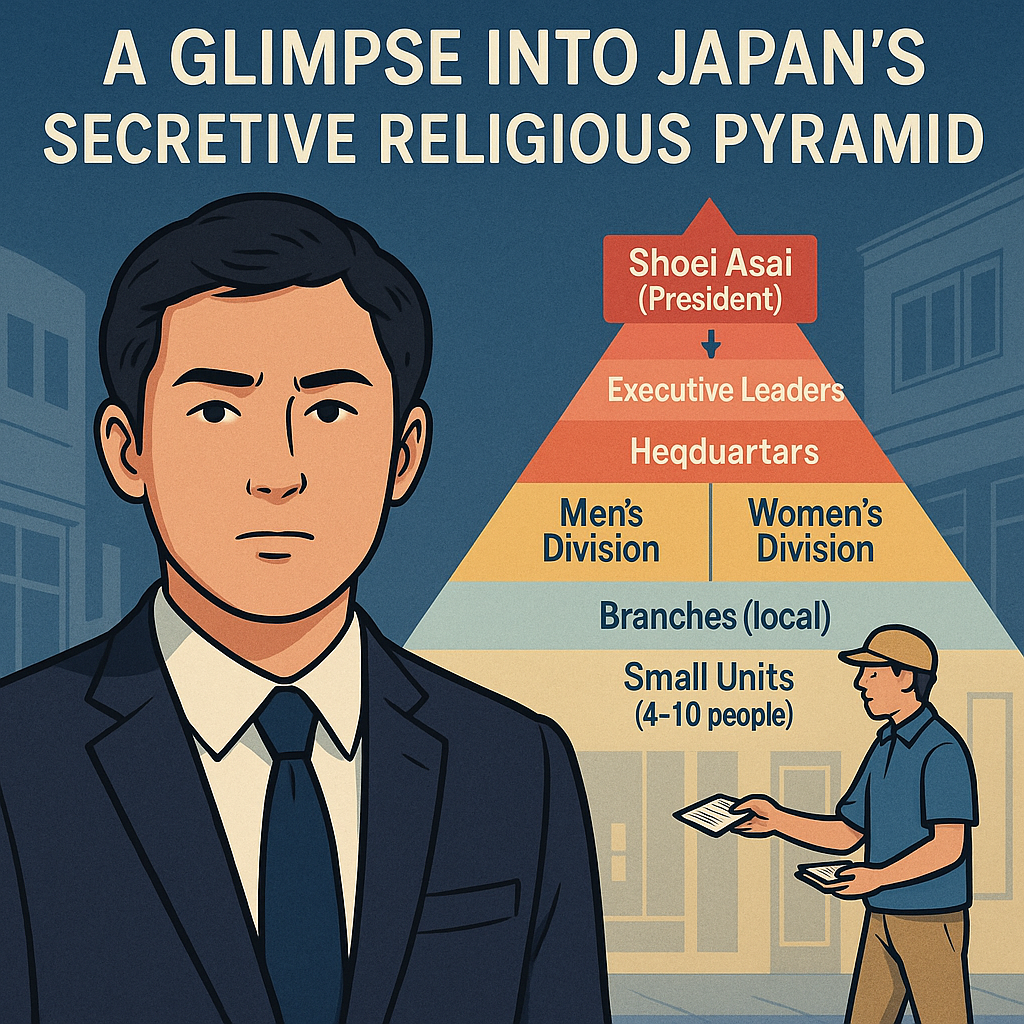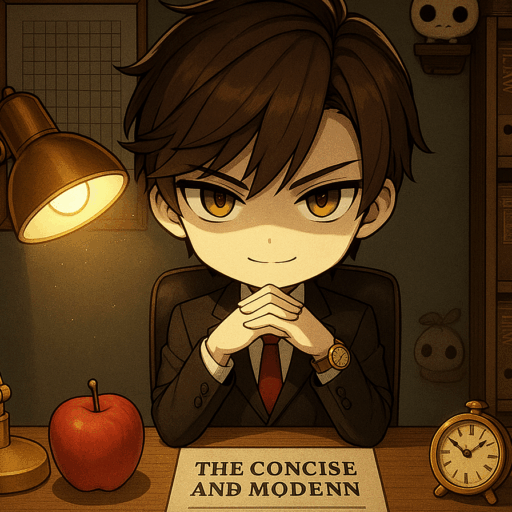Introduction
You may have encountered someone handing out flyers on the street in Japan, saying:
“Excuse me, can I have a moment? Japan is in danger right now.”
Behind this kind of street solicitation is a lesser-known Japanese religious group called Kenshokai.
In this article, we’ll explore the internal structure, rules, and daily life within Kenshokai — a group often hidden from public view — using diagrams and firsthand accounts.

Chapter 1: What Is Kenshokai?
- A new religious movement (shinshūkyō) rooted in Nichiren Buddhism
- Originally part of Soka Gakkai, but now an independent group
- Led by Chairman Shoei Asai, the central figure of its doctrine
- Motto: “Establish a National Ordination Platform” (国立戒壇の建立)
Kenshokai is known for its political undertones, aggressive proselytizing, and strict internal hierarchy.
Chapter 2: The Pyramid Structure of Kenshokai (with Diagram)
Kenshokai operates under a highly centralized pyramid system.
Chairman (Shoei Asai)
│
┌───────────────────────────┐
Executive Board (Leaders) Headquarters (Admin, Doctrine, Media)
│
┌─────────┼─────────┐
Men's Division Women's Division Mothers' Division
│ │ │
Regional Branches Regional Branches Regional Branches
│ │ │
Local Units Local Units Local Units
(4–10 members) (4–10 members) (4–10 members)
Information and orders are passed down from the top to regular members through this rigid chain.
Chapter 3: The Brain—Kenshokai’s Central Headquarters
Located in Saitama City, the General Headquarters plays a crucial role.
- Publishes speeches and teachings by the Chairman
- Manages membership databases and tracks proselytizing results
- Produces videos, newspapers, and printed materials
- Collects attendance and activity reports from all over Japan
This is the group’s ideological, administrative, and media command center.

Chapter 4: The Ground-Level Work—Branches and Units
Local activities are organized by branches and small units:
- Branch leaders manage group performance and set quotas
- Unit leaders oversee small teams (4–10 people)
- Mandatory participation in monthly gatherings and prayer sessions
- Door-to-door visits and street outreach are done in small groups
All individual activities are reported back to the headquarters.
Chapter 5: Daily Life—When Religion Becomes Routine
Kenshokai’s faith is deeply embedded in members’ daily routines.
| Activity | Description |
|---|---|
| Video Viewing | Watching the Chairman’s speeches, including his views on war and society |
| Small Meetings | Sharing faith experiences in intimate group settings |
| Prayer Events | Long chanting sessions, sometimes lasting until midnight |
| Outreach | Approaching passersby at train stations, campuses, and shopping areas |
Members track their progress through “Activity Reports” and “Prayer Cards.”
Chapter 6: Strict Internal Rules and Social Pressure
Kenshokai enforces a range of internal rules:
- Honorific speech: Members refer to seniors as “Brother ___” or “Sister ___”
- Scripted conversations: Even if rejected, members are taught to return
- Dress code: Neat and modest clothing is encouraged
- “Encouragement” for underperformers: Often seen as emotional pressure
Former members have reported being contacted for missing reports or criticized for low recruitment numbers.
Chapter 7: Real Life as a Believer—Voices from the Inside
The lifestyle of members can be intense:
- Weekends are mostly consumed by religious activities
- Family conflict can arise due to time and belief pressures
- Members are sometimes instructed to proselytize at school or work
- Leaving the group may lead to being labeled a “traitor”
For some, faith provides purpose. For others, it becomes overwhelming.
Chapter 8: Conclusion—What to Know Before Engaging
Kenshokai is a powerful, organized, and disciplined religious group — but this comes at a cost to personal freedom and autonomy.
If you’re approached by a recruiter, take a moment to research first. And if someone close to you is involved, stay calm, gather information, and respond with empathy, not confrontation.
💡 Bonus: If You Need Help
If you’re being pressured by a Kenshokai member, or worried about someone involved, don’t hesitate to seek help.
Here are options:
Counseling hotlines in Japan (many available in English)
Local non-profit organizations handling cult-related issues
Legal counsel (some offer pro bono advice)



